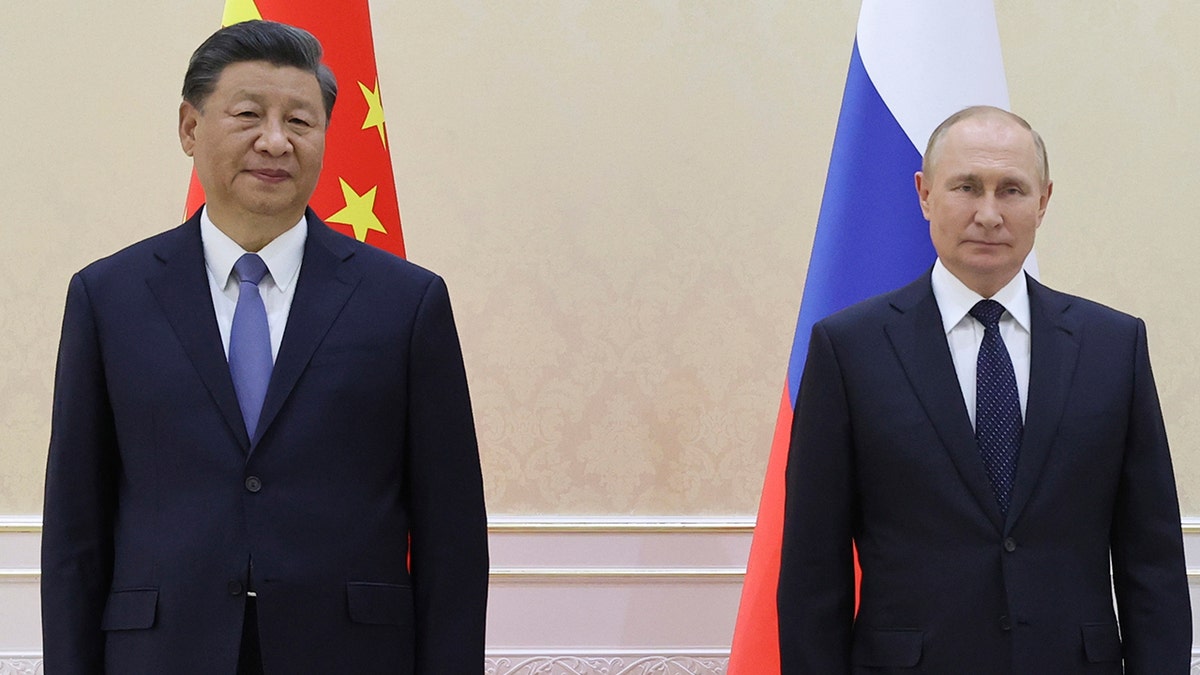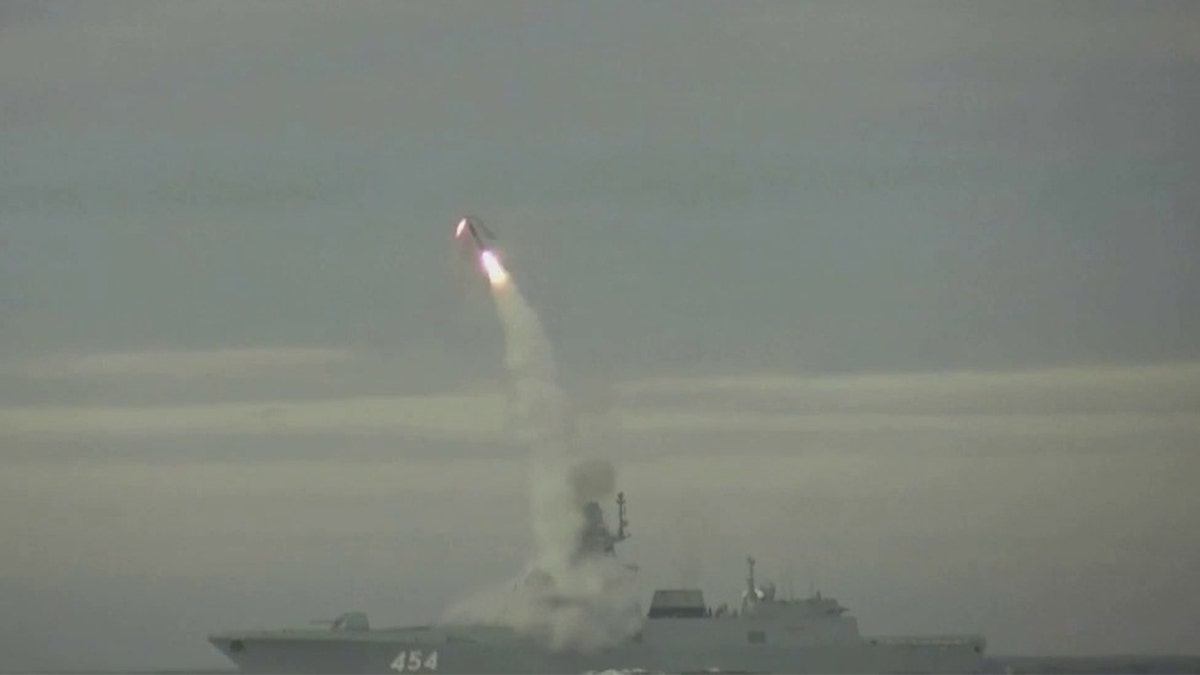Ukraine outcome is 'existential issue' for Russia: Rebekah Koffler
Former defense intelligence officer Rebekah Koffler discusses how Russia is the suspected culprit for the Nord Stream 2 pipeline sabotage on 'Fox & Friends Weekend'
Early last month senior Pentagon officials huddled for two days of top secret discussions about Russia and China’s space weapons. Experts from the U.S. Space Command, the Missile Defense Agency, the Office of the Director of National Intelligence and the CIA, among others, delivered classified briefings on the grave threat posed by these incredibly destructive high-tech devices. A highly-classified tabletop wargame followed.
The danger of space warfare is increasing, as the two-theater war scenario that the U.S. has long feared is no longer hypothetical. Moscow and Beijing are strengthening their anti-U.S. partnership at a time when Russia is engaged in a brutal war on Ukraine and China is turning ever more aggressive with Taiwan. Having all but lost the conventional phase of the war, Putin is reportedly mulling nuclear warfare, which may trigger NATO intervention even as China menaces Taiwan.
Russian and Chinese strategists view U.S. reliance on space as both our strategic advantage and Achilles heel. Many Americans don’t realize just how dependent we are on space for many aspects of our civilian life, as well as for warfighting. We rely on our satellites for global navigation, water management, power grid monitoring, weather forecasting, broadband access, and telecommunications for applications ranging from banking to education to telemedicine, among other things.
SPACE FORCE GENERAL: CHINA, RUSSIA 'CATCHING UP QUICKLY TO US'

Chinese President Xi Jinping and Russian President Vladimir Putin attend the Shanghai Cooperation Organisation (SCO) summit in Samarkand, Uzbekistan, Sept. 15, 2022. (Alexandr Demyanchuk, Sputnik, Kremlin Pool Photo via AP)
When you use Google Maps to drive to the nearest 7-Eleven, it is powered by the Global Position System (GPS), a constellation of 31 satellites flown by the U.S. Space Force at an altitude of 12,550 miles. Our troops also rely on GPS for tasks like synchronizing operations, pinpointing targets, locating personnel, and doing a myriad of other things in a war zone. In fact, the U.S. government, allied, and commercial satellites have been tracking the movements and activities of Russian forces throughout the conflict in Ukraine, assisting Ukrainians in defending their country.
Having watched American warfighters’ tactics in conflict zones across the globe, Russia and China have concluded that our reliance on technology is a vulnerability to be exploited. Both have developed doctrines and capabilities to deafen and blind our forces. By crippling our satellites – thus disabling communications, reconnaissance, missile warning, navigation, command and control, and other missions – these adversaries seek to negate America's superior conventional firepower.
The Russians believe that taking away what they perceive as the technological "crutch," could paralyze U.S. forces psychologically and disrupt the "kill chain," preventing our weapons from reaching their targets. Chinese strategists call these disruptive technologies an "Assassin's Mace," a concept that conveys an inferior military countering superior one by leveling a playing field with much less expensive options. Remember when insurgents in Afghanistan destroyed expensive U.S. military hardware with homemade IEDs? At approximately $1.7 billion a pop, American space birds present attractive sitting ducks. Even the former STRATCOM commander Gen. John Hyten called U.S. space birds "big, fat, juicy targets."
CLICK HERE TO GET THE OPINION NEWSLETTER

The Long March-2F Y13 rocket, carrying the Shenzhou-13 spacecraft and three astronauts in China's second crewed mission to build its own space station, launches at Jiuquan Satellite Launch Center near Jiuquan, Gansu province, China October 16, 2021. (Reuters)
Russia and China are developing and fielding a broad range of anti-satellite (ASAT) weapons. These include jammers, lasers, and orbital interceptors that cozy up to an adversary’s satellites to inspect or attack them. The advantage of less destructive options such as jamming and electronic warfare is that they can be used at the inception of a conflict to destabilize the opponent’s society and create chaos. Imagine not being able to get cash out of an ATM, fill up your car with gas or being stuck in traffic jam on the way to an emergency room.
The most destructive ASAT is a ground-based direct-ascent mobile missile, such as Russia’s PL-19 Nudol, which is capable of permanently destroying spacecraft in low-earth orbit. Russia tested Nudol in November 2021, against a live target, a Russian satellite COSMOS 1408, destroying it and creating 1,500 pieces of trackable orbital debris. Last year, China performed a dual test of a hypersonic weapon and a fractional orbital bombardment, the capability that the head of U.S. Strategic Command described as "never before seen in the world."

Russia said it tested a hypersonic Zircon cruise missile in the Barents Sea, May 28, 2022. (Russian Ministry of Defense)
CLICK HERE TO GET THE FOX NEWS APP
By operationalizing fractional orbital bombardment systems and space-to-ground weapons, Russia and China would markedly offset U.S. conventional superiority, making them more confident about engaging in war with us. Both countries view space as another warfighting domain, along with ground, air, sea and cyberspace.
The Pentagon has known about the possibility of attacks on U.S. space systems since January 2001, when a commission led by the then Defense Secretary-designate Donald Rumsfeld issued a report warning about a space Pearl Harbor. Regretfully, like the IT industry, which was caught off-guard by U.S. adversaries’ advanced cyber capabilities and willingness to hack U.S. networks, the aerospace industry and the Pentagon seem woefully unprepared for the possibility of space warfare with Russia and China.





















